#léon weber
Explore tagged Tumblr posts
Text
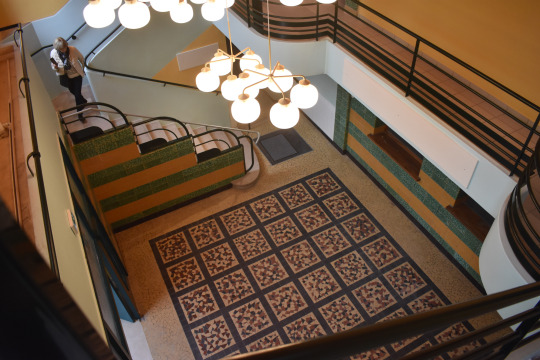


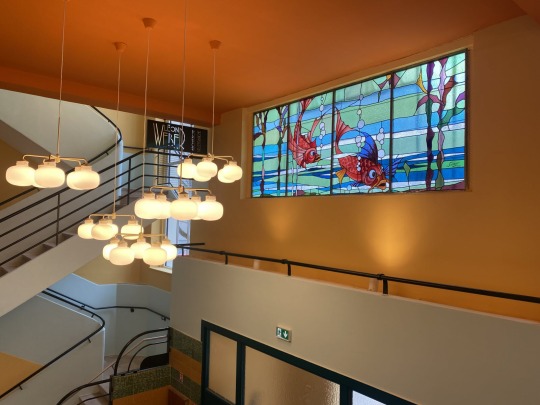
La Halle Bointon à Villefranche-sur-Saône, France, ex piscine conçue en 1935 par l’architecte suisse Léon Weber (1892-1972), transformée en 1985 en établissement sportif. Crédit photo Le Patriote Beaujolais - source Cristina Ardelean.
21 notes
·
View notes
Text
Daria Ionova and Maksim Izmestiev

Daria Ionova Дарья Ионова as “The Young Girl” and Maksim Izmestiev Максим Изместьев as “The Rose”, “Le Spectre de la Rose Видение Розы”, choreo and scenario by Mikhail Fokine (1911), music by Carl Maria von Weber (“Afforderung zum Tanz”), libretto by Jean Louis Vaudoyer based on the poem “Le Spectre de la Rose” by Théophile Gautier, costume by Léon Bakst Леон Бакст, Mariinsky Ballet Мариинский Tеатр, Saint Petersburg, Russia.
Source and more info at: Photographer Aleksandr Neff on Facebook Photographer Aleksandr Neff on Instagram Photographer Aleksandr Neff on VKontakte
via Maksim Izmestiev on Instagram
Note I: This blog is open to receiving and considering any suggestions, contributions, and/or criticisms that may help correct mistakes or improve its content. Comments are available to any visitor.
Note II: Original quality of photographs might be affected by compression algorithm of the website where they are hosted.
#Afforderung zum Tanz#Aleksandr Neff Александр Нефф#Bailarina#Balerina#Balerino#Balet#Ballerina#Ballerino#Ballet#Ballett#Balletto#Carl Maria von Weber#Dance#Dancer#Dans#Danse#Dansen#DANZA#Daria Ionova Дарья Ионова#Балерина#Балет#Видение Розы#Танец#Танцор#Jean-Louis Vaudoyer#Léon Bakst Леон Бакст#Le Spectre de la Rose#Maksim Izmestiev Максим Изместьев#Mariinsky Ballet Мариинский театр#Mikhail Fokine
2 notes
·
View notes
Text
"Old Eastern Europe under the four empires (Hohenzollern, Habsburg, Romanov and Ottoman) in spite of all the half-hearted or simply bogus reforms after 1848 remained, with the exception of the Western fringe and a few other pockets of modernity, an agrarian caste society where the overwhelming majority of the population lived in personal servitude, humility, deference, illiteracy, corvée and scurvy, not to speak of an ecclesiastical reign and brutal terror by the gendarmerie and feudal flunkeys. The propertyless peasants, not any longer called serfs but half-slaves in all but name, apart from the occasional blind jacquerie or pogrom (more often than not incited by the Court in order to frighten the gentry and the restive burghers and proles in the feeble towns) were not able to do anything to improve their living conditions.
Socialist revolutionaries had to address the problem of ‘backward’ caste society first where most of the ‘bourgeoisie’ were mediaeval-type petty merchants, mostly quite poor and ignorant, and the ‘proletariat’ were mostly journeymen artisans, living in the interstices of a still largely feudal society where, apart from the landowning aristocracy and the Soldateska, the military caste, political disenfranchisement was pretty general. In the relatively wealthy and modern Hungary, less than seven percent of the population had the vote, and electoral fraud, ballot-stuffing and police intimidation had been a matter of course even in those extra safe circumstances. Opposition MPs were thrown out from the Chamber by armed police upon an order by the Speaker – and this was the Austro-Hungarian belle époque, not the darkest Siberia.
(...)
In the absence of an autochthonous, home-grown bourgeoisie this decisive step away from agrarian caste society was to be taken by a strategic alliance between the proletariat and the intelligentsia. But these social groups themselves were rather peculiar in Eastern Europe, possessing a pre-modern, caste character also. The industrial proletariat in the East was mostly immigrant, allogenous workforce. In Bohemia and Hungary even, labour union members did not speak Czech or Hungarian, but German (in the first socialist trial in Hungary in 1871 the royal tribunal had to use interpreters to take the depositions of the defendants neither of them –leaders of the Hungarian workers’ movement – being able to understand Magyar), not to speak of the well-known Swiss (and Gentile) radical, Rudolf Rocker, who was forced to learn Yiddish when he wanted to address working-class anarchists in the East End of London (today he should learn Bengali). To be a proletarian socialist in Eastern Europe meant to be separated ethnically (in a mostly German-speaking cosmopolian or ‘internationalist’community) and denominationally or confessionally (in a community of non-believers or non-practising, lapsed Christians or agnostics) very remote from the rest of the people.
The revolutionary intelligentsia– however unfashionable it is to mention this – was mostly Jewish. So it is hardly surprising that, according to a survey by the respected Russian historian Aleksandr Ushakov, out of 12 members of the Bolshevik central committee, 9 were Jewish, all the 11 members of the Menshevik central committee were Jewish, out of 15 members of the right-wing Social Revolutionaries (SR) 13 were Jewish, of the 12 members of the left SR 10, the Moscow committee of the anarchists had 5 members, 4 being Jewish. If by no means so extreme,the same was true in the labour movements in the Austro-Hungarian Monarchy, the Balkans and the Arab Middle East then nominally still ruled by the Sublime Porte.
Max Weber has spoken of ‘pariah capitalism’ (elaborated by the Belgian revolutionary Marxist, Abram Léon during the second world war) and this was up to a point ‘pariah socialism’, the bold project of the isolated urban proletariat and the impoverished, uprooted intellectuals whose largely imaginary world was rounded off by the myth of the advanced West of which more later. Many memoirs on the Eastern left report that the parliamentary socialists in the distant Reichstag in Berlin or in Vienna had been the object of an adulation quite unsuspected in those imperial capitals: Bebel, Liebknecht, Adler, Renner, Bauer were regarded as latter-day saints, people who have got the respect and dignity denied to their less fortunate Oriental brethren, rather like the Rastafarians in the Caribbean admired Haile Selassie, a black man who was emperor and the Lion of Judah."
-Gáspár Miklós Tamás, "A Capitalism Pure and Simple" (2007)
4 notes
·
View notes
Text
Birthdays 5.11
Beer Birthdays
John Moffat (1766)
Gilbert Greenall (1806)
Stephen Weber (1822)
Christian Weyland (1826)
Dietrich Knabe (1842)
John Rowling (1940)
Jack McAuliffe (1945)
Derek Smith (1975)
Five Favorite Birthdays
Eric Burdon; rock singer (1941)
Salvador Dali; artist (1904)
Richard Feynman; physicist (1918)
Martha Quinn; V.J. (1959)
Baron von Munchausen; storyteller, soldier (1720)
Famous Birthdays
Anawrahta; king of Burma and founder of the Pagan Empire (1014)
Anne of Bohemia (1366)
Rose Ausländer; Ukrainian-English poet (1901)
Irving Berlin; composer (1888)
Tim Blake-Nelson; actor (1964)
Carla Bley; pianist (1936)
Foster Brooks; comedian (1912)
Chang and Eng Bunker, Thai-American conjoined twins (1811)
Jean-Baptiste Carpeaux; French artist (1827)
Sabrina Carpenter (SInger; 1999)
Laetitia Casta; model (1978)
Gladys Rockmore Davis; painter (1901)
Edsger W. Dijkstra; Dutch computer scientist (1930)
Stanley Elkin; writer (1930)
Charles W. Fairbanks; journalist and politician (1852)
Louis Farrakhan; Islamic leader (1933)
Bernard Fox; British actor (1927)
Jean-Léon Gérôme; French artist (1824)
Walter Goodman; English artist (1838)
Martha Graham; dancer, choreographer (1894)
Antony Hewish; English astronomer (1924)
Robert Jarvik; artificial heart inventor (1946)
John Lowell, Jr.; businessman and philanthropist (1799)
Doug McClure; actor (1935)
Paul Nash; British painter (1889)
Cam Newton; football player (1989)
Peter North; porn actor (1957)
King Oliver; jazz trumpeter, bandleader (1885)
Denver Pyle; actor (1920)
Harriet Quimby; pilot and screenwriter (1875)
Natasha Richardson; actor (1963)
Margaret Rutherford; actor (1892)
Mort Sahl; comedian (1927)
Frank Schlesinger; astronomer (1871)
Phil Silvers; comedian, actor (1911)
Holly Valance; Australian actor (1983)
Doodles Weaver; actor (1911)
2 notes
·
View notes
Photo
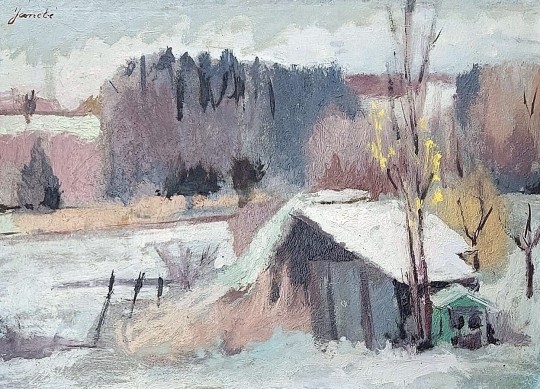
Paysage hivernal

Portrait d'une femme

Junge Bäuerin mit Apfelkorb, 1940

Sitzender Halbakt im Freien, 1953
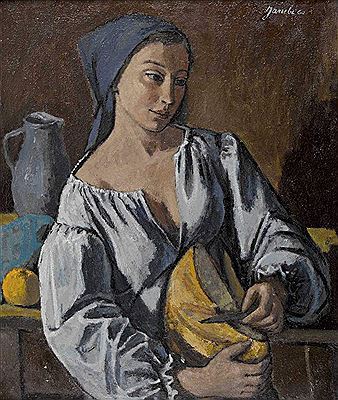
"LA COUPEUSE DE PAIN" (1960) Jeanne (Janebe) Barraud-Pellet
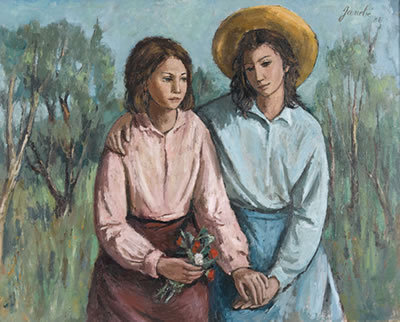
PORTRÄT ZWEIER SCHWESTERN IN SONNIGER LANDSCHAFT (1986)

Janebé (Jeanne Barraud), Malou aux tournesols, 1948, huile sur bois aggloméré, 92 x 80 cm, FAA-JAN-5194.
JANEBÉ (Jeanne Barraud)
Jeanne Pellet n’étudie pas l’art dans les écoles mais fréquente dès l’adolescence les ateliers des artistes chaux-de-fonniers Léon Perrin, William Stauffer et Georges Dessoulavy, pour lesquels elle pose tout en observant leur pratique. Elle épouse Charles Barrault en 1926. S’ils vivent alors simplement, leur magasin d’encadrement est un lieu où affluent les artistes de la Chaux-de-Fonds. Jeanne commence à peindre à la fin des années trente sous le pseudonyme de Janebé. Elle obtient une bourse fédérale des Beaux-Arts en 1939 et en 1940.
À ses débuts, elle peint dans des ateliers peu confortables et chichement éclairés, qui lui font découvrir le clair-obscur. Elle réalise plusieurs séjours en Algérie et en Tunisie. Dans les années cinquante, elle divorce et emménage dans une maison où elle installe son atelier et apprécie l’atmosphère champêtre du jardin.
À partir de 1951, elle vit avec Albert Weber, qu’elle épouse peu de temps après. Ce dernier accompagne et facilite la vie artistique de sa femme. Dès lors elle expose régulièrement à Berne et à Zurich. Très présente sur la scène artistique suisse, elle expose régulièrement et devient une artiste très appréciée du public et des critiques.
À partir de 1954, elle préside la section neuchâteloise de la Société suisse des femmes peintres. En 1956, elle est membre du jury de l’Exposition nationale des beaux-Arts à Bâle. Son énergie lui permet de peindre jusqu’en 1995.
S’inscrivant dans la tradition figurative européenne, elle a bâti son parcours de peintre par son travail très personnel et par l’immersion dans le milieu artistique neuchâtelois. Gérald Comtesse a dit d’elle qu’elle s’est imposée par sa liberté.
FAA : Donation du fonds d’atelier décidée par Gérald Comtesse (✝︎) et son épouse en 2020. Donation d’une première série de 5 œuvres en 2021.
a Ü:
Jeanne Pellet studierte Kunst nicht in der Schule, sondern besuchte als Jugendlicher die Ateliers der Künstler Léon Perrin, William Stauffer und Georges Dessoulavy, für die sie posierte, während sie deren Praxis beobachtete. 1926 heiratete sie Charles Barrault. Wenn sie einfach lebten, war ihr Rahmengeschäft ein Ort, an den sich die Künstler von La Chaux-de-Fonds strömten. Jeanne begann Ende der dreißiger Jahre unter dem Pseudonym Janebé zu malen. 1939 und 1940 erhielt sie ein eidgenössisches Stipendium für die Beaux-Arts.
In ihren Anfängen malte sie in ungemütlichen und spärlich beleuchteten Ateliers, was sie mit dem Hell-Dunkel bekannt machte. Sie unternahm mehrere Reisen nach Algerien und Tunesien. In den fünfziger Jahren ließ sie sich scheiden und zog in ein Haus, in dem sie ihr Atelier einrichtete und die ländliche Atmosphäre des Gartens genoss.
Ab 1951 lebte sie mit Albert Weber zusammen, den sie kurz darauf heiratete. Letzterer begleitet und erleichtert das künstlerische Leben seiner Frau. Seither stellt sie regelmässig in Bern und Zürich aus. Sie ist in der Schweizer Kunstszene sehr präsent, stellt regelmässig aus und wird zu einer Künstlerin, die beim Publikum und bei der Kritik sehr beliebt ist.
Ab 1954 präsidierte sie die Sektion Neuenburg des Schweizerischen Malervereins. 1956 war sie Mitglied der Jury der Landesausstellung der Bildenden Künste in Basel. Seine Energie erlaubte es ihm, bis 1995 zu malen.
In der europäischen figurativen Tradition hat sie ihre Karriere als Malerin durch ihre sehr persönliche Arbeit und das Eintauchen in das Neuenburger Künstlermilieu aufgebaut. Gérald Comtesse sagte von ihr, dass sie sich durch ihre Freiheit durchgesetzt habe.
FAA: Spende des Workshop-Fonds, beschlossen von Gérald Comtesse (︎ ✝ ) und seiner Frau im Jahr 2020. Schenkung einer ersten Serie von 5 Werken im Jahr 2021.
JANEBÉ (Jeanne Barraud) – Fondation Ateliers d’Artiste

Gemälde von einer Frau im Gelben Kleid


Janebé (Jeanne Barraud) La jeune fille en rose (1984)
Jeanne Barraud-Pellet (1907-2000)
Née le 30 septembre 1907 à Praz-Vully. Jeanne Pellet fréquente dès l'âge de seize ans les ateliers d'artistes chaux-de-fonniers, notamment ceux de William Stauffer, Léon Perrin et Georges Dessouslavy. En 1925, elle épouse le peintre Charles Barraud. Tout d'abord attirée par la sculpture, elle se tourne ensuite vers la peinture.
En 1940, elle prend le pseudonyme de Janebé, obtient une bourse fédérale et commence à exposer régulièrement en Suisse. Si elle pratique parfois le paysage et la nature morte, Janebé est surtout un peintre de figures où la présence de la femme domine.
Bibliographie: Max Huggler, Janebé, G. Attinger, Hauterive, 1986.
https://www.galeriedesannonciades.ch/nos-ventes-en-ligne/peintres-neuchatelois/janebe-2-detail
a Ü:
Geboren am 30. September 1907 in Praz-Vully. Seit ihrem sechzehnten Lebensjahr besuchte Jeanne Pellet die Ateliers von Künstlern aus La Chaux-de-Fonds, insbesondere von William Stauffer, Léon Perrin und Georges Dessouslavy. 1925 heiratete sie den Maler Charles Barraud. Zunächst von der Bildhauerei angezogen, wandte sie sich dann der Malerei zu.
1940 nahm sie das Pseudonym Janebé an, erhielt ein eidgenössisches Stipendium und begann, regelmässig in der Schweiz auszustellen. Obwohl sie manchmal Landschaften und Stillleben praktiziert, ist Janebé vor allem eine Malerin von Figuren, bei denen die Präsenz von Frauen dominiert.
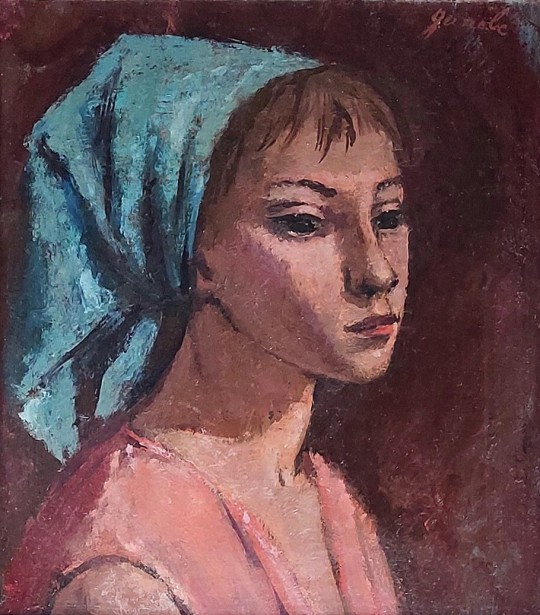
Janebé : Le foulard bleu (1970)
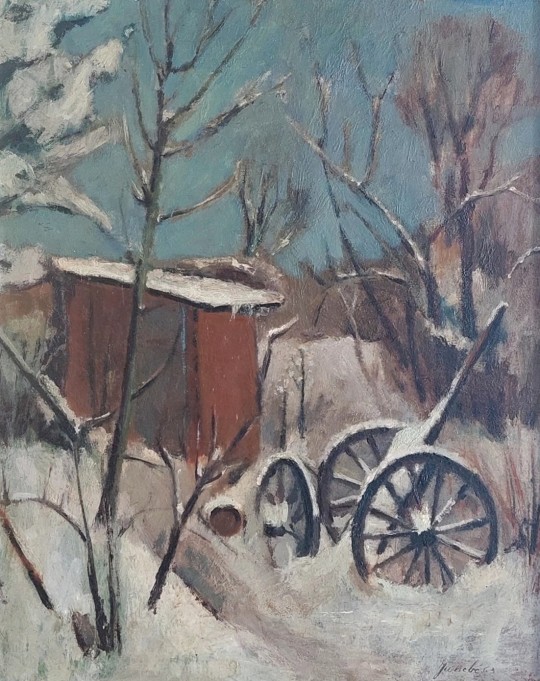
Charrette sous la neige (1963)

Jeune femme assise

Portrait de jeune fille
1 note
·
View note
Text
Transcriptions ③ /// Nikolai Berdyaev on the Bourgeois
"The bourgeois lives in the finite, he is afraid of the expanse of the infinite." (Nikolai Berdyaev)
The next entry in our series of transcriptions is excerpted from Nikolai Berdyaev’s Slavery and Freedom, translated from the Russian by Reginald Michael (R. M.) French. Berdyaev’s philosophical work, largely descended from the Christian existentialism of Kierkegaard and Dostoevsky, is relatively unappreciated today but was influential on many of his contemporaries within and beyond his native…
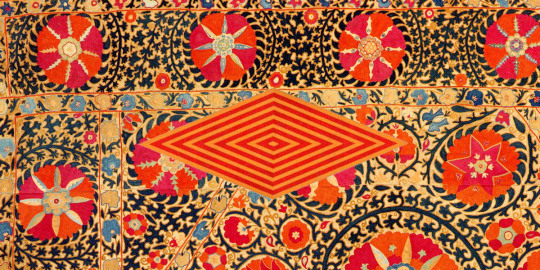
View On WordPress
#Alexander Herzen#Aristocracy#Capitalism#Emmanuel Mounier#Esprit#Freedom#Gabriel Marcel#Jacques Maritain#Juan Luis Segundo#Karl Marx#Léon Bloy#Lev Shestov#Louis Cancelmi#Luxury#Max Weber#Nikolai Berdyaev#Personalism#Philosophy#Raïssa Maritain#Reginald Michael French#Slavery#The Bourgeois#Thomas Carlyle
2 notes
·
View notes
Text

Photographer Mark Olich Марк Олич
Ekaterina Osmolkina (Mariinsky Ballet) as The Young Girl, “Le Spectre de la Rose”, choreography by Mikhail Fokine (1911), music by Carl Maria von Weber ("Afforderung zum Tanz"), libretto by Jean-Louis Vaudoyer based on the poem “Le Spectre de la Rose” by Théophile Gautier, costume by Léon Bakst, 130th Anniversary of Vaslav Nijinsky, 2019 Dance.Dance.Dance., Tovstonogov Bolshoi Drama Theater, Saint Petersburg, Russia (October 14, 2019)
Photographer Mark Olich
10 notes
·
View notes
Photo


Dance, dance, dance! Today is International Dance Day. The first image is a design by Léon Bakst for a costume for Vaslav Nijinsky as the Rose in Le Spectre de la Rose. The second image shows dancers Nijinsky and Tamara Karsavina in costume for the Ballets Russes production in 1911.
Le Spectre de la rose (The Spirit of the Rose) is a short ballet about a young girl who dreams of dancing with the spirit of a rose, a keepsake from her first ball. Written by Jean-Louis Vaudoyer, the ballet is based on a verse by Théophile Gautier and used the music of Carl Maria von Weber's piano piece Aufforderung zum Tanz(Invitation to the Dance). The Ballets Russes premiered Le Spectre de la rose with Nijinsky as the Rose and Karsavina as the Young Girl in Monte Carlo on April 19, 1911. (from Wikipedia.)
Spectre de la Rose: Costume design for Vaslav Nijinsky as the Rose Bakst, Leon, 1866-1924, Russian [artist]Graphite, watercolor and/or tempera, silver paint and purple glaze on paper Russian Nijinsky, Waslaw, 1890-1950 [subject] 1911 Repository: Wadsworth Atheneum, Hartford, Connecticut, United States 1933.394 HOLLIS number: 8000980706
Vaslav Nijinsky and Tamara Karsavina in Le Spectre de la Rose Roosen, L., French [photographer] French Nijinsky, Waslaw, 1890-1950 [subject] Karsavina, Tamara, 1885-1978, Russian [subject] 1911 HOLLIS number: olvwork432984
#internationaldanceday#dance#ballet#spectredelarose#nijinsky#harvardfineartslibrary#harvardfineartslib#fineartslibrary#Harvard#harvard library#HarvardLibrary#costumedesign#costume design
68 notes
·
View notes
Text
Summary, Week 5
Lecture 5 Art Déco The hardships and gruesome realities of WW1 left the world ready for a new start, and eager to interpret this new beginning with a new, modern style. The Great Depression brought ten years of SERIOUS hardship, and prohibition made alcohol consumption illegal. As a result, the world was hungry for escapism and fantasy. Hollywood provided that in abundance, and the world was introduced to Art Déco through the movies, and the Art Déco theaters they watched them in.
The world was obsessed with speed and travel, much of which was made possible by technological advances achieved during the war. Ships, trains, planes, and cars all got designed to better suit the new age. Transportation design was a new frontier, as designers began to create the visual language of travel, turning machinery into iconic visual statements.
Advances in technology and materials (plastic! chrome!) allowed new products to celebrate a new form language. Radios, record players, cameras, and cosmetic packaging all celebrated the technology, the materials, and the new style of the Art Déco period. The 1925 Paris Expo inspired the world to embrace Art Déco, and American department stores and museums organized exhibits to spread the style in America. In order to stimulate sales in economic hard times, manufacturers began turning to designers to style products and diversify product ranges. The early Industrial Designers launched their careers and design firms to meet these challenges. Using market research and interviews, designers began to incorporate user-focused design into their design process. People you really should know about: Walter Dorwin Teague Donald Deskey Norman Bel Geddes Raymond Loewy (more on him in a few weeks) Henry Dreyfuss (more on him in a few weeks) People you would probably like to know about: Émile-Jacques Ruhlmann Paul Frankl Renée Lalique Edgar Brandt Kem Weber Lurelle Guild Egmont Arens John Vassos Hugh Ferris (architectural renderings) Reuben Haley Erik Magnussen Dominique Wells Coates Pier Castiglioni Luigi Dominioni Jean Heiberg George Lum Peter Müller-Munk Russel Wright (more on him in a few weeks) Gilbert Rohde (more on him in a few weeks) Harold Van Doren (more on him in a few weeks) Josephine Baker (not a designer but you want to remember her anyway)
More obscure designers included in case you are insatiable: Lajos Kozma Jean Goulden Cassandre (poster design) Also Mazza (poster design) Léon Jallot Clarence Karlstadt René Coulon Denham Maclaren Louis Dierra Reginald Mitchell (Supermarine plane) Wally Byam (Air Stream) Jean Otis Reinecke Jean Puiforcat Carl Breer John Morgan Aileen Bushnell Hour-Lavigne
Other people included: Tamara de Lempicka (painter) Charles Lindbergh (pilot) Jean Dupas (Normandie murals) Frederick Preiss (Revere staff designer) Frances Resor Waite (wife #2 of and designer for and business partner of Norman Bel Geddes)
1 note
·
View note
Photo

J’ai le plaisir de vous annoncer l’ouverture officielle de mon nouveau cabinet, situé 39 rue Léon Weber 69400 Villefranche-sur-Saône. Pour prendre rendez-vous : Doctolib : https://www.doctolib.fr/psychologue/lyon/manon-britel?pid=practice-233989 Téléphone : 06 09 24 81 74 Mail : [email protected]
Au plaisir de vous y recevoir
0 notes
Text
Nouvelles acquisitions de la BSPO (04/06/18)

À la une : Marketing du sport : une vision internationale / Michel Desbordes, André Richelieu
Cote de rangement : GV 716 D 255859 / Domaine : Marketing
« Quels sont les nouveaux leviers marketing à la disposition des organisations sportives? L'ouvrage fait le point sur les dernières recherches dans le domaine en matière de gestion de la marque, d'événementiel sportif et de management des enceintes sportives.
Dans un contexte de concurrence accrue – où la visibilité et la différenciation sont les maîtres mots –, il est plus que nécessaire de connaître les dernières techniques adaptées à ce contexte particulier qu’est le spectacle sportif. C’est pourquoi Marketing du sport présente une approche originale de cette discipline récente qu’est le marketing du sport. En associant deux compétences reconnues au niveau international (le Français Michel Desbordes et le Canadien André Richelieu), l’ouvrage offre une vision européenne et nord-américaine et fait le point sur les dernières recherches dans le domaine en matière de gestion de la marque, d’événementiel sportif et de management des enceintes sportives.
Les auteurs sont des enseignants-chercheurs, mais également des consultants régulièrement sollicités par des entreprises privées ou des médias. C’est pourquoi l’approche de ce livre intéressera tant le monde académique (professeurs et étudiants) que les professionnels (agences de marketing ou de communication, équipementiers sportifs, organisateurs d’événements sportifs, fédérations, ligues) désireux de se mettre à la page en utilisant les outils marketing les plus récents dans la discipline.
Michel Desbordes est professeur de marketing du sport à l'Université Paris-Sud. Auteur de 30 livres de référence dans le domaine, il est l'éditeur de l'International Journal of Sports Marketing and Sponsorship depuis 2009. Très impliqué à l'international, il est professeur associé à la Shanghai University of Sport (Chine) et est professeur invité dans de nombreux pays. » - Quatrième de couverture
Gestion
L'entreprise et l'Évangile : une histoire des patrons chrétiens / Marie-Émmanuelle Chessel, Nicolas de Bremond d'Ars, André Grelon
Cote de rangement : BX 1795 C 255861
Métamorphose des managers : à l'ère du numérique et de l'intelligence artificielle / Cécile Dejoux et Emmanuelle Léon
Cote de rangement : HD 30 .2 D 255856
Les dirigeants face à l'information : traitement, appropriation, décision / Pascal Junghans
Cote de rangement : HD 30 .2 J 255858
Les nouvelles frontières du digital : quelles tendances pour la révolution digitale ? / sous la direction de Jean-Michel Huet et d'Adeline Simon
Cote de rangement : HD 30 .2 N 255857
Les décisions absurdes. 3, L'enfer des règles / Christian Morel
Cote de rangement : HD 30 .23 M 255862
Business Models pour les équipes : voyez comment votre organisation fonctionne vraiment et quelle y est la place de chacun / Tim Clark et Bruce Hazen
Cote de rangement : HD 58 .9 C 255850
Le gestionnaire et les états financiers / D.-Claude Laroche, Sophie Marmousez, Zoffirath Dissou
Cote de rangement : HF 5657 .4 L 255855
Le modèle Toyota : 14 principes qui feront la réussite de votre entreprise / Jeffrey Liker
Cote de rangement : TL 278 L 255847
Sociologie
Weber : sociologist of empire / Kieran Allen
Cote de rangement : HM 479 .W42 A 255863
Sexual harassment online : shaming and silencing women in the digital age / Tania G. Levey
Cote de rangement : HQ 1237 L 255860
Erving Goffman et le travail social / sous la direction de Stéphanie Garneau et Dahlia Namian
Cote de rangement : HV 40 E 255844
Vegan order : des éco-warriors au business de la radicalité / Marianne Celka
Cote de rangement : HV 4708 C 255848
Écologie
Sentir-penser avec la terre : l'écologie au-delà de l'Occident / Arturo Escobar
Cote de rangement : HC 125 E 255864
Sciences du travail
Les cellules de reconversion en Wallonie : politiques de l'emploi et restructurations d'entreprises / Aline Bingen
Cote de rangement : HD 5715 .5 B 255854
Finance
Créer une monnaie complémentaire : manuel à l'usage des citoyen-ne-s / Bernard Lietaer
Cote de rangement : HD 3430 L 255852
Introduction à la finance de marché : 15 principes / Stéphane Reverre
Cote de rangement : HG 4523 R 255853
Informatique
Data science / John D. Kelleher and Brendan Tierney
Cote de rangement : QA 76 .9.B45 K 255851
Religion
Le mythe : une introduction / Robert A. Segal
Cote de rangement : BL 304 S 255849
Économie
Cultural economics and theory : the evolutionary economics of David Hamilton / David Hamilton e.a.
Cote de rangement : HB 97 .3 C 255846
The cultural and political economy of recovery : social learning in a post-disaster environment / Emily Chamlee-Wright
Cote de rangement : HV 636 C 255845
Sciences sociales
Analyse des données : méthodes et outils statistiques, applications à la prise de décision, cas d'entreprise détaillés / Daniel Caumont, Silvester Ivanaj
Cote de rangement : HA 29 .5 C 255843
Tous ces ouvrages sont exposés sur le présentoir des nouveautés de la BSPO. Ceux-ci pourront être empruntés à domicile à partir du 18 juin 2018.
#Marketing#Gestion#Sociologie#Ecologie#SciencesDuTravail#Finance#Informatique#Religion#Economie#sciencessociales
1 note
·
View note
Text
Livres lus en 2020
Fabrice Bak, la précocité dans tous ses états
Gaël Brustier, a demain gramsci
Benjamin Constant, Adolphe
Pierre Ducrozet, l’invention des corps
Jérôme Fourquet, l’archipel français
Michel Houellebecq, plateforme
Michel Houellebecq, soumission
Geoffroy de Lagasnerie, sortir de notre impuissance politique
Bruno Latour, où atterir ?
Pierre-Olivier Léchot, la réforme (1517 - 1564)
Pierre Lemaitre, au revoir la haut
Frédéric Lordon, les affects de la politique
Andreas Malm, comment saboter un pipeline
Karl Marx, les luttes de classes en France
Maupassant, le horla
Thibaut de Montaigu, la grâce
Quentin Meillassoux, après la finitude (2è lecture)
Luuk von Middelaar, le passage à l’Europe
Nietzsche, par delà bien et mal
Vincent Peillon, une religion pour la république
Daniel Quinn, Ishmael
Jean Paul Sartre, la transcendance de l’égo
Stephen Smith, la ruée vers l’Europe
Léon Trotsky, la révolution permanente
Léon Trotsky, programme de transition
Max Weber, l’éthique protestante et l’esprit du capitalisme
Alice Zeniter, l’art de perdre
Alice Zeniter, comme un empire dans un empire
0 notes
Text
Daria Ionova and Maksim Izmestiev

Daria Ionova Дарья Ионова as “The Young Girl” and Maksim Izmestiev Максим Изместьев as “The Rose”, “Le Spectre de la Rose Видение Розы”, choreo and scenario by Mikhail Fokine (1911), music by Carl Maria von Weber (“Afforderung zum Tanz”), libretto by Jean Louis Vaudoyer based on the poem “Le Spectre de la Rose” by Théophile Gautier, costume by Léon Bakst Леон Бакст, Mariinsky Ballet Мариинский Tеатр, Saint Petersburg, Russia.
Source and more info at: Photographer Aleksandr Neff on Facebook Photographer Aleksandr Neff on Instagram Photographer Aleksandr Neff on VKontakte
via Maksim Izmestiev on Instagram
Note I: This blog is open to receiving and considering any suggestions, contributions, and/or criticisms that may help correct mistakes or improve its content. Comments are available to any visitor.
Note II: Original quality of photographs might be affected by compression algorithm of the website where they are hosted.
#Afforderung zum Tanz#Aleksandr Neff Александр Нефф#Bailarina#Balerina#Balerino#Balet#Ballerina#Ballerino#Ballet#Ballett#Balletto#Carl Maria von Weber#Dance#Dancer#Dans#Danse#Dansen#DANZA#Daria Ionova Дарья Ионова#Балерина#Балет#Видение Розы#Танец#Танцор#Jean-Louis Vaudoyer#Léon Bakst Леон Бакст#Le Spectre de la Rose#Maksim Izmestiev Максим Изместьев#Mariinsky Ballet Мариинский театр#Mikhail Fokine
2 notes
·
View notes
Text
Birthdays 5.11
Beer Birthdays
John Moffat (1766)
Gilbert Greenall (1806)
Stephen Weber (1822)
Christian Weyland (1826)
Dietrich Knabe (1842)
John Rowling (1940)
Jack McAuliffe (1945)
Derek Smith (1975)
Five Favorite Birthdays
Eric Burdon; rock singer (1941)
Salvador Dali; artist (1904)
Richard Feynman; physicist (1918)
Martha Quinn; V.J. (1959)
Baron von Munchausen; storyteller, soldier (1720)
Famous Birthdays
Anawrahta; king of Burma and founder of the Pagan Empire (1014)
Anne of Bohemia (1366)
Rose Ausländer; Ukrainian-English poet (1901)
Irving Berlin; composer (1888)
Tim Blake-Nelson; actor (1964)
Carla Bley; pianist (1936)
Foster Brooks; comedian (1912)
Chang and Eng Bunker, Thai-American conjoined twins (1811)
Jean-Baptiste Carpeaux; French artist (1827)
Laetitia Casta; model (1978)
Gladys Rockmore Davis; painter (1901)
Edsger W. Dijkstra; Dutch computer scientist (1930)
Stanley Elkin; writer (1930)
Charles W. Fairbanks; journalist and politician (1852)
Louis Farrakhan; Islamic leader (1933)
Bernard Fox; British actor (1927)
Jean-Léon Gérôme; French artist (1824)
Walter Goodman; English artist (1838)
Martha Graham; dancer, choreographer (1894)
Antony Hewish; English astronomer (1924)
Robert Jarvik; artificial heart inventor (1946)
John Lowell, Jr.; businessman and philanthropist (1799)
Doug McClure; actor (1935)
Paul Nash; British painter (1889)
Cam Newton; football player (1989)
Peter North; porn actor (1957)
King Oliver; jazz trumpeter, bandleader (1885)
Denver Pyle; actor (1920)
Harriet Quimby; pilot and screenwriter (1875)
Natasha Richardson; actor (1963)
Margaret Rutherford; actor (1892)
Mort Sahl; comedian (1927)
Frank Schlesinger; astronomer (1871)
Phil Silvers; comedian, actor (1911)
Holly Valance; Australian actor (1983)
Doodles Weaver; actor (1911)
1 note
·
View note
Text
UN SONGE REVISITÉ

Sandrine CHATELIER / © Gleb Makhnev
CHRISTINE HASSID
La chorégraphe en résidence à Bruges a créé trois lectures du Spectre de la rose régulièrement dansées sur scène, dont une version pensée pour et avec la compagnie russe Tanstheatr.
Il y a toujours un moment où l’on doit se frotter à une relecture d’une oeuvre, explique Christine Hassid, dont deux chorégraphies seront dansées le 12 février, à Saint-Pée-sur-Nivelle, par la compagnie russe Tanstheatr, après Instinct de Gilschamber. On voit alors la qualité d’un créateur, ceux qui ont un imaginaire développé et ceux qui n’ont pas d’idées. Car on ne part que de la contrainte. Que peut-on apporter d’autre ? J’ai toujours adoré la musique du Spectre de la rose. J’ai toujours eu envie d’en faire ma relecture, d’autant qu’aucune femme n’en a jamais fait. » Le Spectre de la rose originel, créé pour les Ballets russes de Diaghilev en 1911, ne réunit que de grands noms : Michel Fokine à la chorégraphie ; le livret de Jean-Louis Vaudoyer s’inspire d’un poème de Théophile Gautier (1838) ; la musique, signée Carl Maria von Weber, est orchestrée par Berlioz. Léon Bakst conçoit décors et costumes. À sa création, à Monte-Carlo, deux stars de la danse : Tamara Karsavina et Vaslav Nijinski. L’argument ? Une jeune fille, rentrée de son premier bal, est endormie dans un fauteuil. Elle rêve du souvenir d’une rose.
Pour faire sa relecture, Christine Hassid veut un danseur classique de haut niveau. En 2014, elle voit danser Aurélien Houette de l’Opéra de Paris. C’est le déclic ! « Je me suis dit : “Mon dieu, c’est un danseur fantastique, contacte-le !” C’était comme si je le voyais autrement que ce que j’avais sous les yeux ; comme si je voyais un énorme potentiel que je pouvais amener autre part ! » Sa première relecture du Spectre, coproduit par Dantzaz, voit le jour en janvier 2017. Les rôles sont inversés : le spectre est une femme ; la personne endormie, un homme. « La pièce évoque la force d’évocation d’un parfum, le romantisme et la place de la beauté dans notre société. Le propos du ballet est intemporel. » « J’écoute beaucoup d’émissions musicales. Je trouve super intéressant d’entendre la même oeuvre jouée par différents chefs d’orchestre, différents pianistes, etc. Et si on faisait pareil pour la danse ? » Ce qui permettrait aussi de proposer différentes formules de spectacles. Sa deuxième relecture est contemporaine, avec deux danseurs masculins, l’un classique, l’autre urbain. Le spectre, déshumanisé, est un effluve. Le parfum d’une rose rappelle le souvenir d’une femme à un homme endormi. Enivré par ces émanations personnifiées par un autre danseur, il est entraîné dans une valse envoûtante. Après avoir vu ces deux versions, Oleg Petrov, directeur de la compagnie Tanstheatr, passe commande d’une troisième pour cinq danseurs. Deux garçons et deux filles, qui représentent les quatre éléments, interprètent le spectre ; un danseur masculin, la personne endormie. « Lorsqu’on met les quatre éléments ensemble, on touche l’extraordinaire, le rêve ; l’impalpable et l’impossible aussi ; c’est le paradis. » La première a eu lieu le 28 novembre 2017 au festival international Nagrani, le plus grand festival de danse contemporaine de l’Oural. « Ce fut un pur bonheur ! » Pourtant, ça n’était pas gagné d’avance : « À la différence des Français, les Russes connaissent tous Le Spectre de la rose par coeur : la musique, l’histoire et tous les détails du ballet ! »
Répétition publique dans le cadre de la saison Danse Biarritz, réinterprétation du Spectre de la rose, mardi 5 février, 19 h, Nouveau Studio gare du Midi, Biarritz (64200). Entrée libre sur réservation : 05 59 24 67 19 [email protected]
Instinct I, Le Spectre de la rose et cetera, Cie Gilschamber et Tanstheatr dance company, mardi 12 février, 20 h, espace culturel Larreko, Saint-Pée-sur-Nivelle (64310). larreko.fr
0 notes
Quote
Max Weber has spoken of ‘pariah capitalism’ (elaborated by the Belgian revolutionary Marxist, Abram Léon during the second world war) and this was up to a point ‘pariah socialism’, the bold project of the isolated urban proletariat and the impoverished, uprooted intellectuals whose largely imaginary world was rounded off by the myth of the advanced West of which more later. Many memoirs on the Eastern left report that the parliamentary socialists in the distant Reichstag in Berlin or in Vienna had been the object of an adulation quite unsuspected in those imperial capitals: Bebel, Liebknecht, Adler, Renner, Bauer were regarded as latter-day saints, people who have got the respect and dignity denied to their less fortunate Oriental brethren, rather like the Rastafarians in the Caribbean admired Haile Selassie, a black man who was emperor and the Lion of Judah. Proletarians and déclassé intellectuals in the East, surrounded by a sea of incomprehensible archaic peasantry (and don’t forget, while the city spoke Polish, the countryside spoke Ukrainian, another city spoke Hungarian, but the village sang in Rumanian, the civil servants corresponded in French and German, but their subjects stammered in some Slavonic patois, and even the official and highly artificial Hochdeutsch was not understood by many, not even by most ethnic Germans), the ‘red’ cities and districts (Presnya, Floridsdorf, Csepel, Grivitza) were strangers in more ways than one. When in the courses of adult education run by the social democrats in Vienna, Pest, Cracow, Czernowitz people talked about the same topics as people in the Fabian Society or at the Cooper Union, the upper classes did not read anything or if at all, the Mme de Sévigné, and the poor, illiterate and pious peasants believed in witches, charms and – until after 1945 – could not read a clockface and might not have heard yet that the earth was round. Documentary writers in the 1930s tell us that most peasants do not use the coin of the realm in years and they do not realy believe that Franz Joseph is not any longer on the throne and they themselves are now the citizens of some new-fangled ‘successor state’. Trade union seminars were on a higher level than the Royal Academies of Science. Radical magazines discussed Nietzsche and Baudelaire in St Petersburg and Pest earlier than in London. Mr Pulitzer exported the mass-readership popular press from Hungary to New York and not vice versa. At the same time, feudal caste society was more alive and more terrible thanin early eighteenth-century France. But at least the philosophes of the French Enlightenment were French – who would have dreamed of calling Voltaire or Diderot unFrench? However, East European socialists from Lenin and Martov to Otto Bauer and Lukács to Luxemburg and Eisner to Dobrogeanu-Gherea and Marchlewski-Karski had been citizens only of a future republic and regarded as such. The great Russian radical writer, Korolenko, declared that his country was not Russia but the Russian literature. I cannot say that I have never experienced such a feeling.
TGM - Capitalism, Pure and Simple
1 note
·
View note